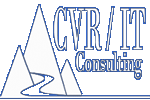Training Services → Beyond the Basics®
Controlling Project Risk: Managing Threats and Promoting Opportunities
|
Controlling Project Risk moves beyond the standard project management curriculum by explaining how to manage both sides of risk: threats and opportunities. Experience has shown us that proactive management of project risk can reduce the incidence and severity of issues by up to 90%. Participants are led through a series of exercises, each of which contributes to establishment of an effective Risk Management Practice. Topics include:
- Understanding the origins of risk
- Risk's dual nature: Threat and Opportunity
- Developing a Risk Management Plan
- Identifying and characterizing project risks
- Qualifying risks to set priorities
- Quantifying the potential impact of threats and opportunities
- Building threat and opportunity registers
- Developing proactive risk plans
- Secondary and residual risk
- Recognizing when contingency plans are needed
- How to calculate risk contingency funds
- Understanding project opportunity
- Finding and leveraging project opportunities
- Managing project risk
- Optimizing project risk strategy
Who should attend
This course is of special value to project managers who want a more complete understanding of Risk Management; experienced project managers who want to add to their toolkit of Risk Management tools and techniques; functional managers with project responsibility who want to better manage risk in their projects; and Project Management Office staff who want to manage risks to the project portfolio.
Prerequisites
This course assumes familiarity with basic project management concepts as well as some experience in the planning and execution of projects. Effective Project Management or the equivalent is suggested to ensure a firm grounding in Project Management concepts.
Course Outline
Section 1: Introduction
- Personal Risk Profile
- Our relationship with risk
- Sources of project risk
- Project success factors
- The risk management value proposition
Section 2: Basic Concepts
- The Standard Risk Model
- Threat and opportunity
- Relationship between issues and risks
- Risk at four levels: project, business, community, and business value
- Project plans as a hedge against risk
- The work of Risk Management
- Risk Management timing
Section 3: Planning for Risk Management
- Risk Management factors to consider
- Identifying risk stakeholders
- The Risk Management Plan
Section 4: Risk Identification
- Sources of risk
- Tools for risk identification
- The Risk Statement
- The Risk Register
- Characterizing project threats and opportunities
Section 5: Risk Analysis
- Qualitative evaluation of risk
- Establishing risk scores
- Risk Ranking
- Risk triggers
- Determining root cause
- Quantitative methods
- Calculating Risk Exposure
Section 6: Risk Response Planning
- Proactive and reactive risk management
- Responses to Threats
- Responses to Opportunities
- Secondary and residual risk
- Contingency and Management Reserves
- The Risk Budget
Section 7: Monitoring Risk
- Watching the risk landscape
- Responding to issues
- Contingency and fallback plans
- Impact of proactive risk control
- Tools that manage threats
- Reporting risk status
- Managing risk to Business Value
Section 8: Understanding Opportunity
- The value of opportunity
- Opportunity versus Threat
- Two kinds of opportunity
- Examples of overt opportunity
- Why opportunities are missed
Section 9: Finding Opportunity
- A different view of risk
- Managed and unplanned risk
- Enhanced model of risk
- Strategies and Tools for finding opportunity
Wrap-Up Discussion
This training is fully compliant with the PMI® Practice Standard for Project Risk Management.
Learning Approach
- A highly experienced instructor will use interactive lecture format, numerous hands-on exercises, team activities, group discussions and other techniques to drive home the essential points of this material.
- You have the option of using your own, ongoing project as the focus of class exercises. As a result, not only do you gain experience with the tools, but you also learn more about your project.
- If you have modest risk management knowledge, you will find that the clarity of the material and direct presentation style of the instructor will make the subject matter easy to understand.
- You will receive a Participant Guide which will help you follow the material, take notes and retain what you learned so that you can apply it on your job.
Why should I take this course?
- Controlling Project Risk presents a practical approach to managing threats and opportunities in your project. Take home a whole new set of tools and techniques.
- Training includes instruction in the use of advanced Project Management templates.
- Even an experienced project manager can obtain insights that will help solve common and persistent problems.
- The exercises in this course will give you the hands-on experience you need to put best practice and new tools to immediate use.
Licensing
Use this courseware to teach your students! This course is available under license to qualified Training Providers. Courseware materials include:
- Instructor slides
- Instructor manual with timing guide
- Printed participant guide
- Train the Trainer instruction
- Written for classroom or virtual delivery
For more information, see
Courseware-On-Demand or Contact Us
Every course and workshop in our Project Training program is fully customizable. We offer virtual delivery of the training program you need. Call us: +1.919.495.7371.
All of our courses are fully compliant with the latest release of each relevant standards document such as the PMBOK® Guide, Standard for Portfolio Management, BABOK® Guide, and others.
|
